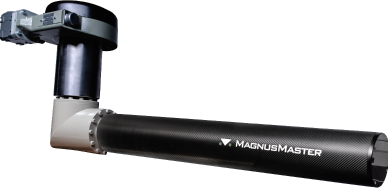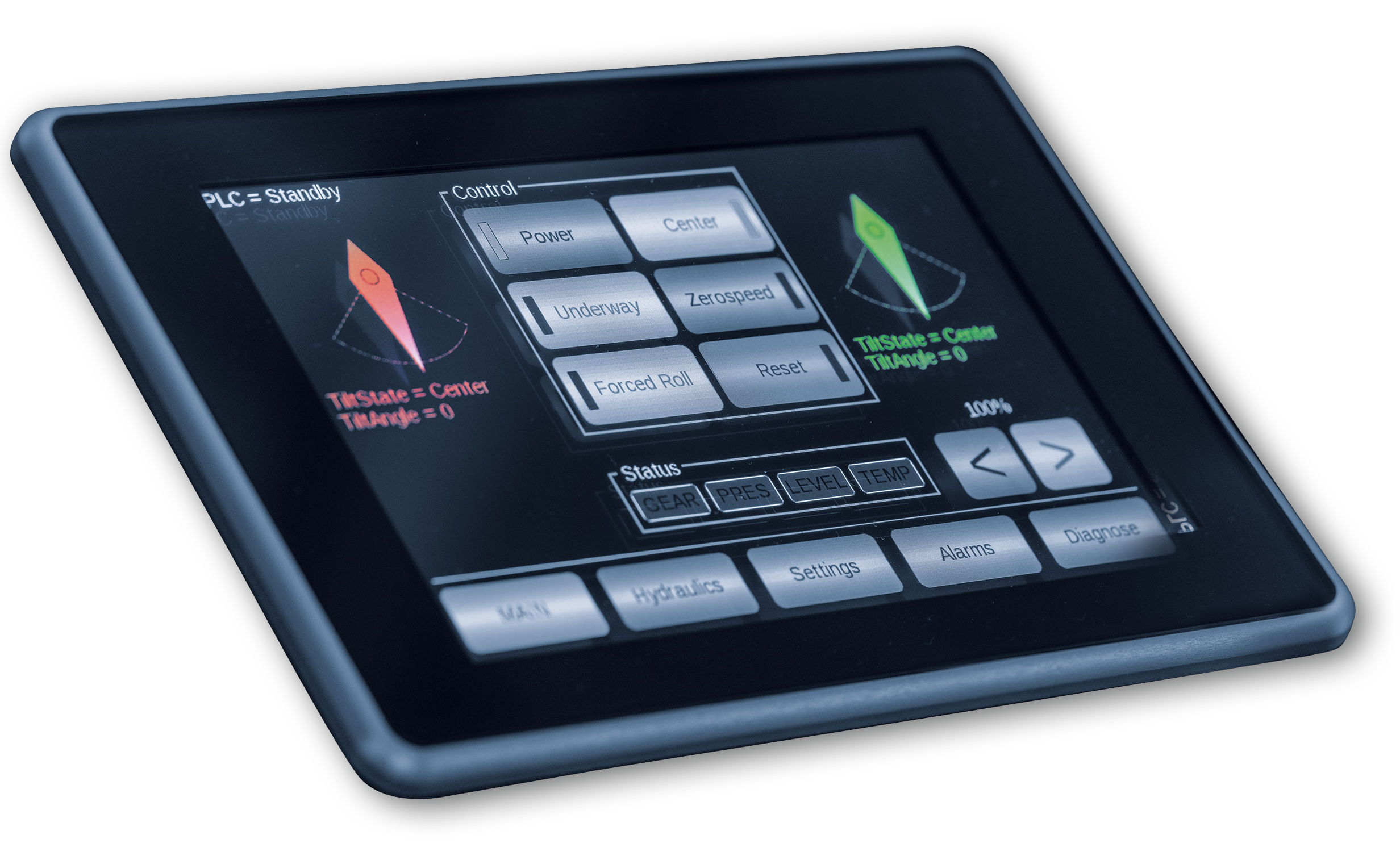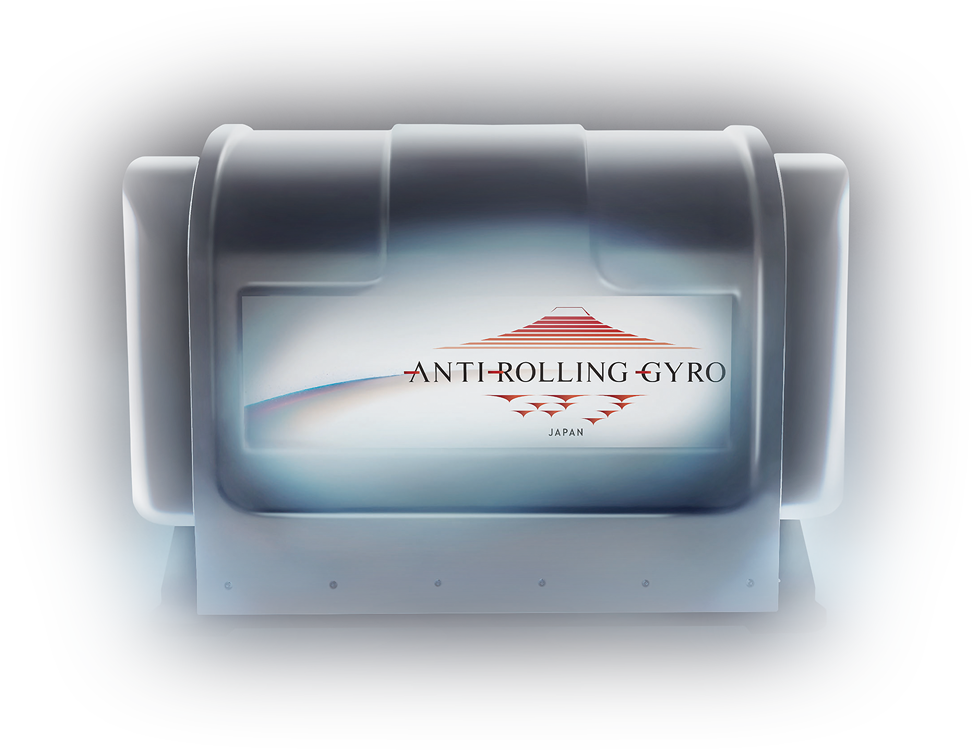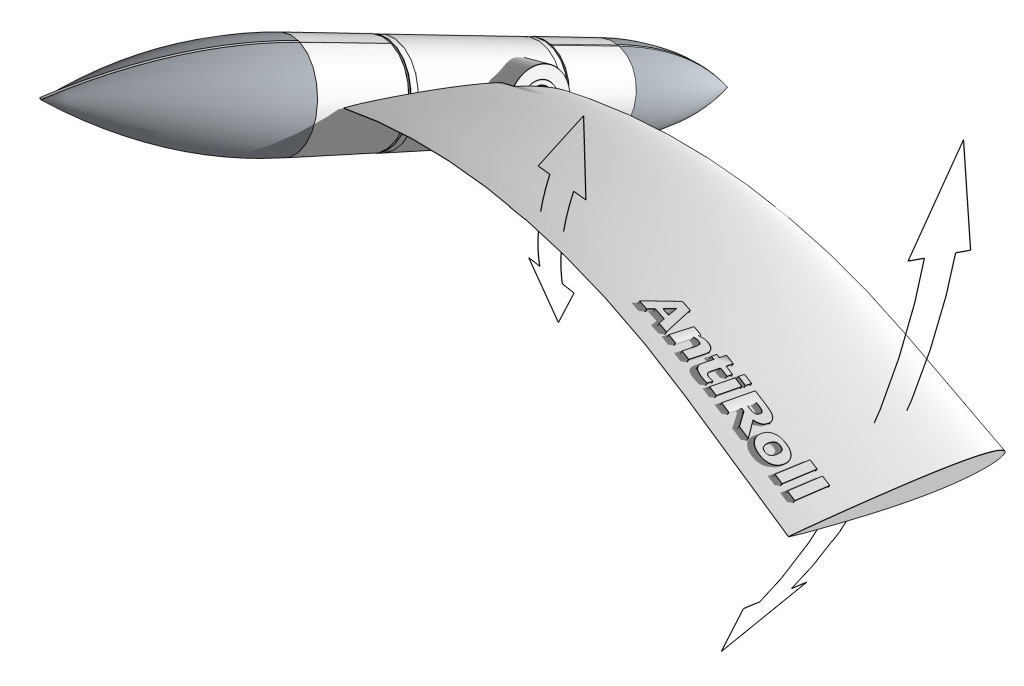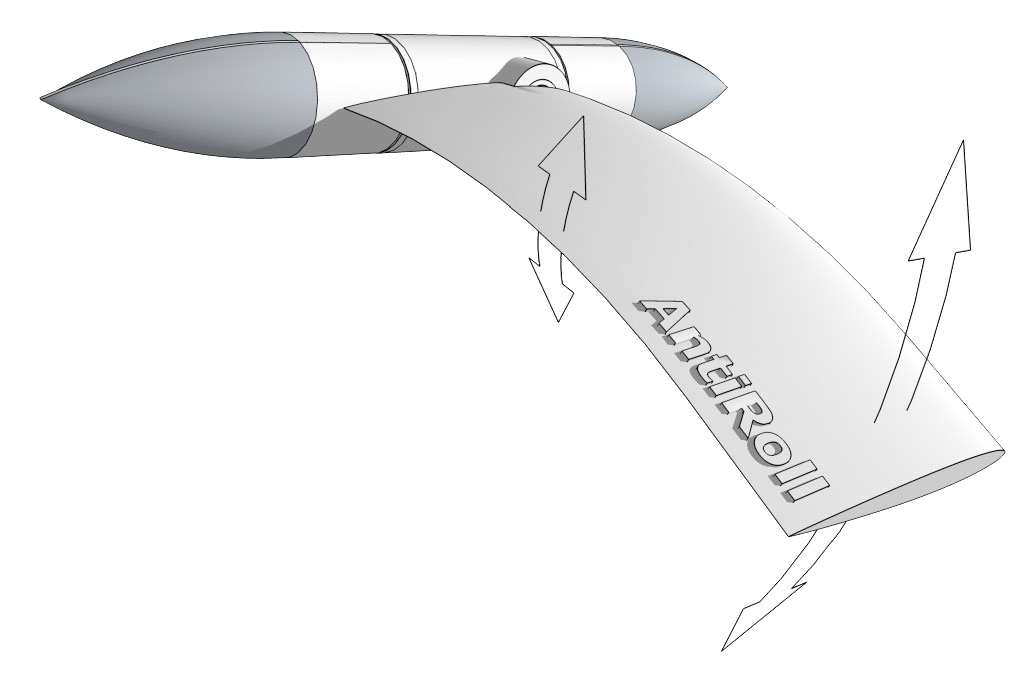
DMS AntiRoll
For low-speed cruising superyachts over 30 metres
This innovative roll damping system has been developed by DMS Holland and perfected together with renowned partners such as Marin, TNO and TU Delft.
Thanks to its unique dual-axis fins, which rotate while underway and make a flapping motion when the yacht is stationary (zero speed), DMS AntiRoll stabilises both underway and when the yacht is at anchor, without compromising on performance in either situation. The concept and operation of this ingenious system takes its inspiration from the fins of the blue whale. Due to the patent obtained for this way of roll damping, the system cannot and must not be replicated by others.

In addition, the flapping movement of the fins generates a much greater lifting effect than fins that only rotate when the ship is stationary. Furthermore, the fins can be retracted or partially folded back into the hull, making the system also suitable for sailing yachts. AntiRoll uses a smart hybrid drive, meaning the system requires relatively little power. DMS has also kept noise of the system during operation to a minimum.
Model and drag tests and expert evaluation have confirmed that the AntiRoll system delivers enhanced performance in both stabilisation and resistance through the water.
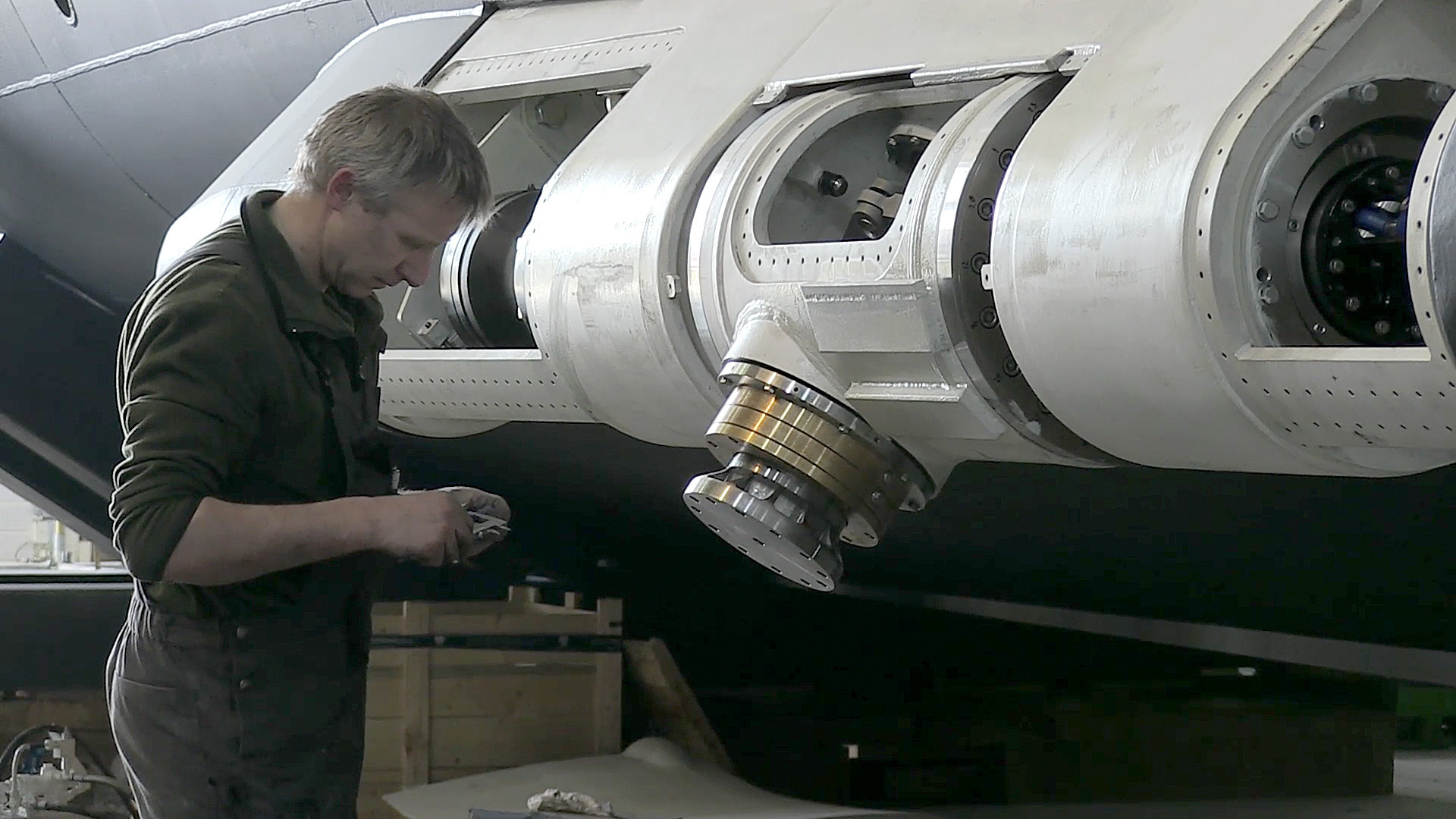
What are the major advantages of this AntiRoll roll damping method in comparison to conventional roll damping?
Enhanced performance
Better results are at the
heart of DMS Holland’s focus. The lifting capacity at zero speed is
therefore two to three times greater than with conventional systems.
Underway, AntiRoll has up to 75% less resistance and the hybrid drive
requires less power.
Two functions in one system
Optimal functionality
both underway and at zero speed thanks to dual-axis fins. Without
compromising on performance in either situation. The unique system is
fully patented.
Safety and convenience
To limit the risk of
damage and increase safety, AntiRoll can be retracted against the hull,
making the system also suitable for sailing yachts.
In addition, the drive units take up less space on board than conventional systems making installation easier and faster.



